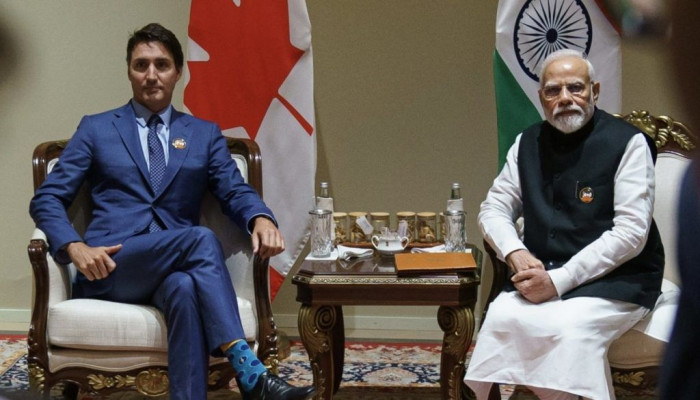The fear of ‘population explosion’ in India is a matter of pure fantasy. The total fertility rate is about 2.24 and may slip to 1.93 by 2025
In 1983, the United Nations Fund for Population Activities (UNFPA) jointly conferred its Population Award for “most outstanding contribution to the awareness of population questions or to their solutions” on two individuals for their “vision and foresight” in “controlling population growth” Indira Gandhi, whose Emergency period was marked by 11 million compulsory sterilisation operations spearheaded by her son Sanjay Gandhi, and Qian Xinzhong, head of China’s State Family Planning Commission, who drove its one? child policy that lasted from 1979 to 2015 and saw 100 million sterilisations and 300 million abortions.
The Nobel laureate economist Theodore Schultz resigned from the UNFPA Advisory Commission in protest against the coercive policies practiced by both recipients. China today has the world’s most imbalanced sex ratio at birth of 111 boys for every 100 girls. India’s is 108 boys for every 100 girls. Together, they account for over 125 million “missing” girls.
The attempt to control the population by coercion is nothing new in human history. Even in the US, a pseudo-scientific movement called “Eugenics” had emerged in the pre-war years to prevent physically or intellectually inferior human beings from being born, leading to about 70,000 forced sterilisations. Minorities like Kazakhs and Uyghurs are still systematically being subjected to forced sterilisations in China.
China’s one? child policy prevented some 400 million births through brutal coercion like cutting-off water and electricity supplies, loss of jobs, destruction of homes and properties,the jailing of non-compliant couples, and by imposing penalties on lax enforcement officials like wage deductions, demotions, or dismissal. The results were catastrophic. By the time China softened it to a two-child policy in 2016, there were 119 boys for every 100 girls. Birth rates reached a 60-year low in 2019, stoking the fear of a shrinking workforce and higher dependency. China’s current two? child policy may not suffice to correct the imbalance and it may have to swing to the other extreme of fixing minimum birth quotas for its couples.
Started in 1952, India’s family planning programme was non-coercive except during the brief interlude of Emergency, and by and large successful. Yet, some policy-makers firmly believe in forcing people to adopt lower family sizes. About half of the population lives in the seven states that penalize families with more than two children: Andhra Pradesh, Odisha, Maharashtra, Rajasthan, Bihar, Gujarat, and Uttarakhand, with UP and Assam about to join the bandwagon.
The fear of a “population explosion” in India is pure fantasy. The total fertility rate (TFR) or the average number of children per woman determines the population growth. At TFR 2.1, the population gets stabilised, and just replaces itself. The 5th National Family Health Survey (NFHS-5), 2019-20 is still incomplete, but according to NFSH-4 (2015-16), India’s TFR was 2.24, down from 3.4 in 1992-93. By 2025, India will attain a below-replacement TFR of 1.93.
As many as 18 Indian states have already reached it, some well below 2.1. Since future mothers are already born, it mightstill take about two decades for the population to peak after which it will decline. As the TFR falls, labour force contracts and dependency increases along with rising medical costs for an expanding elderly population, forcing the working-class population work much harder.
The GDP growth depends on the labour force participation and labour productivity. While productivity can be increased by technology and innovation, India’s active workforce (50 per cent of the population) falls way below those of the developed countries (62 per cent for the USA, 78 per cent for the UK, 64 per cent for China). The fear of a population explosion is clearly overblown- the focus should instead shift to increasing women’s participation in the labour force - which in fact has declined from 34 per cent in 2006 to 25 per cent in 2020.
Similarly, the fear of the Muslim population out numbering the Hindus is an even bigger fantasy. True, Muslims tend to have larger families and their share of population has risen from 9.8 per cent in 1951 to 14.2 per cent in 2011. TFR for the Muslims (2.6) is also above that of the Hindus (2.1), but it has been falling faster, narrowing the gap. Besides, there are wide inter-state variations in the TFR for both Hindus and Muslims. The birth rate is falling across all religions.
The proposed Uttar Pradesh Population (Control, Stabilisation and Welfare) Bill, 2021 limits the availability of incentives only to those having two children or fewer. Evidence shows that such a coercive population policy mostly impacts the poor and the marginalised. They are the ones with high TFR and low literacy and are already affected badly by the pandemic.
The normal Indian preference for a son would inevitably lead to selective and unsafe abortions, worsening sex ratio, and increased economic disparity besides an overall increase in the population of the aged, labour shortage, and economic slowdown. UP has an adverse sex ratio of 912 females for every 1000 males, way below the national average of 943; it would become worse. It would be disastrous to limit subsidies and rations in a state with a high incidence of anaemia in children under five (63 per cent) and stunting (46 per cent). Ironically, 152 out of 304 BJP MLAs in UP who have more than two children would be disqualified.
Chief Ministers Yogi Adityanath and Himanta Biswa Sarma would do well to focus on women’s education instead. The NFHS-4 data showed that TFR declined from 3.1 for illiterate women to 1.71 for women with 12 years of schooling. Female literacy rates in UP and Assam in 2011 were 59 per cent and 67 per cent, respectively, and Muslims have the lowest literacy level of 37 per cent as a group in India. Kerala registered 96 per cent female literacy, sex ratio of 1037, and TFR of 1.8 (NHFS-5) without any coercion.
Infant mortality rate (IMR) is another key determinant of population growth.With improvement inmedical facilities, the survival chances of children improve and the IMR falls. The TFR also automatically falls, as seen in all southern States.The IMR for UP and Assam in 2017 was 41 and 44, respectively, way above the national average of 33 (46, 48, and 37, respectively, for children under five).Urbanisation that gives access to better education and healthcare is another factor. India’s urbanisation is only 34 per cent compared to China’s (50 per cent).
The fact remains that it is not the people, neither Muslims nor Hindus, but the State that has consistently neglected the above determinants of population, and underfunded education and healthcare for decades. To cover its own past failures, it now wants to penalise the people. India neither faces a population explosion nor is population a problem anymore. The debate should be not on how to control the population — it may not need any controlling, — but on how to improve health infrastructure for children and maternalnutrition, focus on female literacy, promote women’s empowerment, and improve female work participation. The population policy should be left to the individual’s choice with neither incentives nor disincentives, and every child should be wanted and cared for. India should learn from China’s failed experience of enforcing coercive population policies.
(The writer is a former Director-General of Office of Comptroller and Auditor General of India and an academic. The views expressed are personal.)
(Courtesy: The Pioneer)








 OpinionExpress.In
OpinionExpress.In















Comments (0)